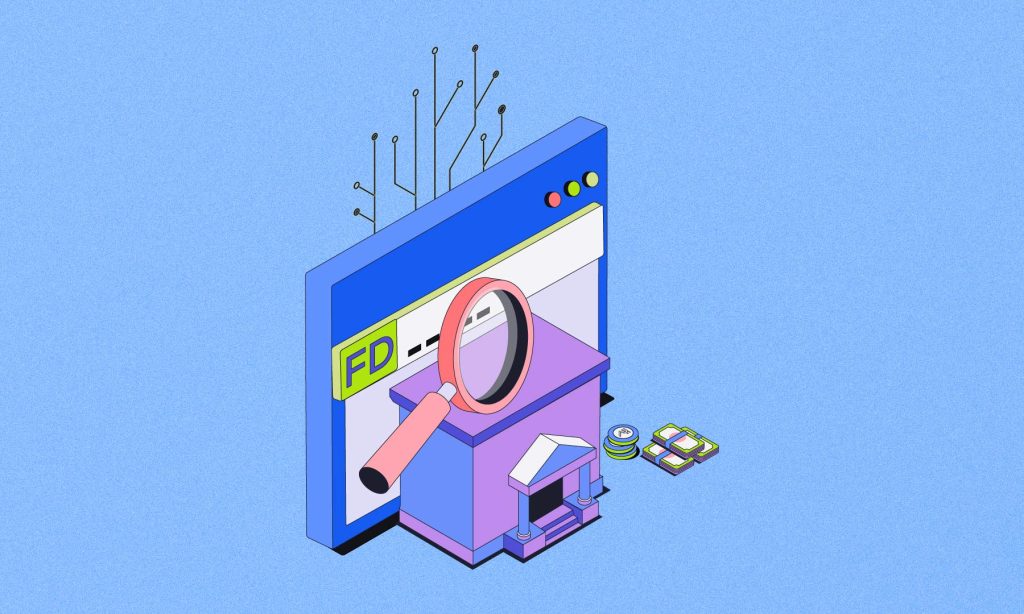Fixed Deposits (FDs) are India’s most sought-after and favorite savings instrument. Though they seem to be straightforward, there exist numerous types of fixed deposit schemes and they come for various financial requirements, risk appetite, and liquidity requirements. Selecting the appropriate FD scheme depending on the type of deposit makes your capital work best at wealth creation along with the capital protection FDs have gained.
What is an FD scheme?
An FD scheme is a time deposit financial product where the investor promises to deposit a sum amount with a post office, NBFC, or a bank for a specified duration against a promised rate of interest repayment. The maturity is at the end of the investment period, and investors get the maturity amount or regular interest installment based on the scheme selected.
Major features of any FD scheme are:
Fixed returns guaranteed.
Flexible tenors (three months to a few years).
Capital protection during tenor.
Systematic interest payment frequencies.
FD schemes suit conservative investors who require financial security and periodic returns.
Understanding different types of fixed deposit schemes
One should know the various types of deposits on offer before opting for any FD:
1. Cumulative fixed deposit
Interest is compounded on a quarterly basis and paid at maturity.
Suitable for amassing wealth.
Eligible to investors who do not need a regular income.
2. Non-cumulative fixed deposit
Payment of interest at intervals (monthly, quarterly, half-yearly, or annually).
No compounding; payments give a regular income stream.
Eligible for retirees and those who need regular income.
3. Tax-saving fixed deposit
Tenure: 5 years (lock-in period).
Can be used to save tax under Section 80C up to Rs. 1,50,000.
Cannot be closed prematurely.
Eligible for salaried class needing tax savings.
4. Senior citizen fixed deposit
Avalable only for senior citizens 60 years and above.
Offers a further 0.25% to 0.35% rate over normal FD rates.
Special schemes by some banks with more relaxed conditions.
5. Flexi or sweep-in fixed deposit
Linked to a savings account.
Surplus amount automatically swept into FD to get a better return.
Offers liquidity as the amount can be withdrawn without closing the FD entirely.
6. NRE/NRO fixed deposits (for NRIs)
NRE FDs: Repatriable with tax-free interest in India.
NRO FDs: Taxable on interest but permits local income deposits.
Applicable currency risk subject to scheme.
Indian FD rates today (2025)
Interest rates differ by institution type, tenure, and investor category:
| Institution | Regular FD Rates | Senior Citizen FD Rates |
| Public Sector Banks | 6.25% – 6.75% | 6.50% – 7.00% |
| Private Banks | 6.50% – 7.00% | 6.75% – 7.30% |
| NBFCs | 7.00% – 7.35% | 7.25% – 7.60% |
| Small Finance Banks | Up to 7.60% | Up to 7.85% |
Rates comparison, the investor can go for the highest paying FD scheme with security.
How to choose the right FD scheme depending on your requirement
For accumulation of wealth
Select cumulative fixed deposits.
Select longer tenors so as to benefit from compounding.
Most suitable for young investors or those having adequate liquidity.
Example calculation:
Investment: Rs. 5,00,000
Tenor: 5 years
Rate of interest: 7.35% p.a.
Maturity amount = Rs. 5,00,000 × (1 + 0.0735/4)^(4×5)
Maturity amount ≈ Rs. 7,18,200
Total interest earned: Rs. 2,18,200
For regular income
Select non-cumulative fixed deposits with return on monthly basis.
Suitable for retirees and pensioners.
Illustration calculation:
Amount: Rs. 10,00,000
Rate of interest: 7.35% p.a.
Yearly interest: Rs. 73,500
Monthly return: Rs. 73,500 / 12 ≈ Rs. 6,125
For tax planning
Invest in tax-saving FDs under Section 80C.
5-year lock-in, but lowers tax cost of income.
For maximum returns with flexibility
Choose Flexi or sweep-in deposits.
Have facility for automatic transfer of excess funds into short-term FDs.
For NRIs
Choose NRE FDs for tax-free repatriable returns.
NRO FDs for Indian-source income, subject to prevailing tax rates.
Tax on interest of fixed deposit
Interest is fully taxable under ‘Income from Other Sources.’
TDS on exceeding Rs. 40,000 (Rs. 50,000 in case of senior citizens) per year.
TDS @ 10% if PAN furnished, 20% if not furnishing PAN.
Example of tax:
Interest in a year: Rs. 1,20,000
Amount to be taxed: Rs. 80,000
TDS deducted: Rs. 8,000
Balance tax to be paid based on income tax slab.
Genuineincome methods of saving tax impact
File Form 15G or Form 15H in the event of entire income being below the exemption limit.
Spread investment across various institutions to remain under TDS thresholds.
Invest in tax-saving FDs to take advantage of Section 80C deductions.
FD laddering: a clever ploy for any type of deposit
Laddering means dividing investments across various tenors, providing:
Liquidity at regular intervals.
Safety from interest rate fluctuations.
Opportunity to reinvest at current rates when each FD matures.
Laddering gives both liquidity and highest returns.
Safety considerations while selecting FD schemes
Go for RBI-regulated institutions.
Choose AAA-rated NBFCs for higher safety.
Deposit in scheduled banks covered up to Rs. 5 lakh under DICGC cover.
Avoid going for very high rates by unregulated players.
Balancing return and safety gives peace of mind during your investment horizon.
Summary
Selecting a suitable FD scheme is largely dependent on understanding different types of fixed deposit schemes and relating them with your investment objectives. For example, investing Rs. 5,00,000 for a cumulative FD of 5 years at a rate of 7.35% can grow to approximately Rs. 7,18,200, giving stable, guaranteed growth. Regardless of whether you want to accumulate wealth, generate regular income, save taxes, or achieve liquidity, there is an FD product suitable for you. Through the application of prudent tenure selection, tax planning, and laddering strategies, investors are able to effectively build wealth while ensuring capital protection.
Disclaimer: The article is meant for information and educational purposes only. The individuals are required to perform a comprehensive analysis of all the benefits, drawbacks and risk factors before engaging or investing in the Indian financial market.
